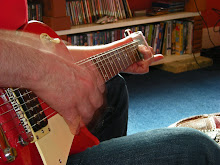Feature on Renault Logan
Renault is shy about its cut-price retro model
By John Lichfield in Paris
25 September 2004
Psst! do you want a new car for the price of a second-hand? Made by people, not robots. The Paris "world motor show" opens today but the new "French" car that all the world's motor industry is talking about will be nowhere to be seen.
It is not exactly that Renault is ashamed of the "Logan"; even if it has the boxy look of a Warsaw Pact car circa 1988; even if it is a new car with something almost unheard of these days, a separate boot. Renault is, it insists, very proud of its "Frankenstein car", assembled from chunks of other proven Renault and Nissan designs and made by cheap labour in the old Dacia factory in Romania.
The idea of the Logan was to slam into reverse gear the decades-old trend in motor engineering, the race towards more and more electronic gadgets and higher performance at higher and higher cost. The Logan is a car with a 21st-century engine and chassis but bodywork, interior and extras stripped down to the 1950s or 1960s essentials.
The original idea was to sell the car exclusively in poorer industrial or developing countries, from Poland to Algeria, at €5,000 (£3,400) a time (less than half the cost of similar size cars, such as the Mégane). In Eastern Europe, in particular, it would replace the ageing Trabants and other former Soviet bloc cars, which are approaching the end of their lives.
This week, however, in response to popular demand from dealers and car magazines, Renault announced that it would also be selling the Logan in France and Germany from June next year and in Britain and other Western European countries soon afterwards.
There is still no place for the Logan in the Paris mondial, or world motor show, opening today, despite the fact that the first models began to roll off the assembly line near Bucharest a few days ago. Renault says that its decision to offer the Logan in Western Europe came too late to place a car in the show.
The suspicion is that Renault did not want its revolutionary idea to steal the limelight from its upmarket entrants.But the version sold in Western Europe will sell for €7,500 or roughly £5,000. Renault justifies the increased price by saying the "western" Logan will have extras such as power-steering, air-bags and air-brakes.
Renault says the niche for the Logan in Western Europe is as a "second car for second homes", or in competition with second-hand cars, or for those following a "down-sizing" trend against conspicuous consumption.
Renault is shy about its cut-price retro model
By John Lichfield in Paris
25 September 2004
Psst! do you want a new car for the price of a second-hand? Made by people, not robots. The Paris "world motor show" opens today but the new "French" car that all the world's motor industry is talking about will be nowhere to be seen.
It is not exactly that Renault is ashamed of the "Logan"; even if it has the boxy look of a Warsaw Pact car circa 1988; even if it is a new car with something almost unheard of these days, a separate boot. Renault is, it insists, very proud of its "Frankenstein car", assembled from chunks of other proven Renault and Nissan designs and made by cheap labour in the old Dacia factory in Romania.
The idea of the Logan was to slam into reverse gear the decades-old trend in motor engineering, the race towards more and more electronic gadgets and higher performance at higher and higher cost. The Logan is a car with a 21st-century engine and chassis but bodywork, interior and extras stripped down to the 1950s or 1960s essentials.
The original idea was to sell the car exclusively in poorer industrial or developing countries, from Poland to Algeria, at €5,000 (£3,400) a time (less than half the cost of similar size cars, such as the Mégane). In Eastern Europe, in particular, it would replace the ageing Trabants and other former Soviet bloc cars, which are approaching the end of their lives.
This week, however, in response to popular demand from dealers and car magazines, Renault announced that it would also be selling the Logan in France and Germany from June next year and in Britain and other Western European countries soon afterwards.
There is still no place for the Logan in the Paris mondial, or world motor show, opening today, despite the fact that the first models began to roll off the assembly line near Bucharest a few days ago. Renault says that its decision to offer the Logan in Western Europe came too late to place a car in the show.
The suspicion is that Renault did not want its revolutionary idea to steal the limelight from its upmarket entrants.But the version sold in Western Europe will sell for €7,500 or roughly £5,000. Renault justifies the increased price by saying the "western" Logan will have extras such as power-steering, air-bags and air-brakes.
Renault says the niche for the Logan in Western Europe is as a "second car for second homes", or in competition with second-hand cars, or for those following a "down-sizing" trend against conspicuous consumption.

